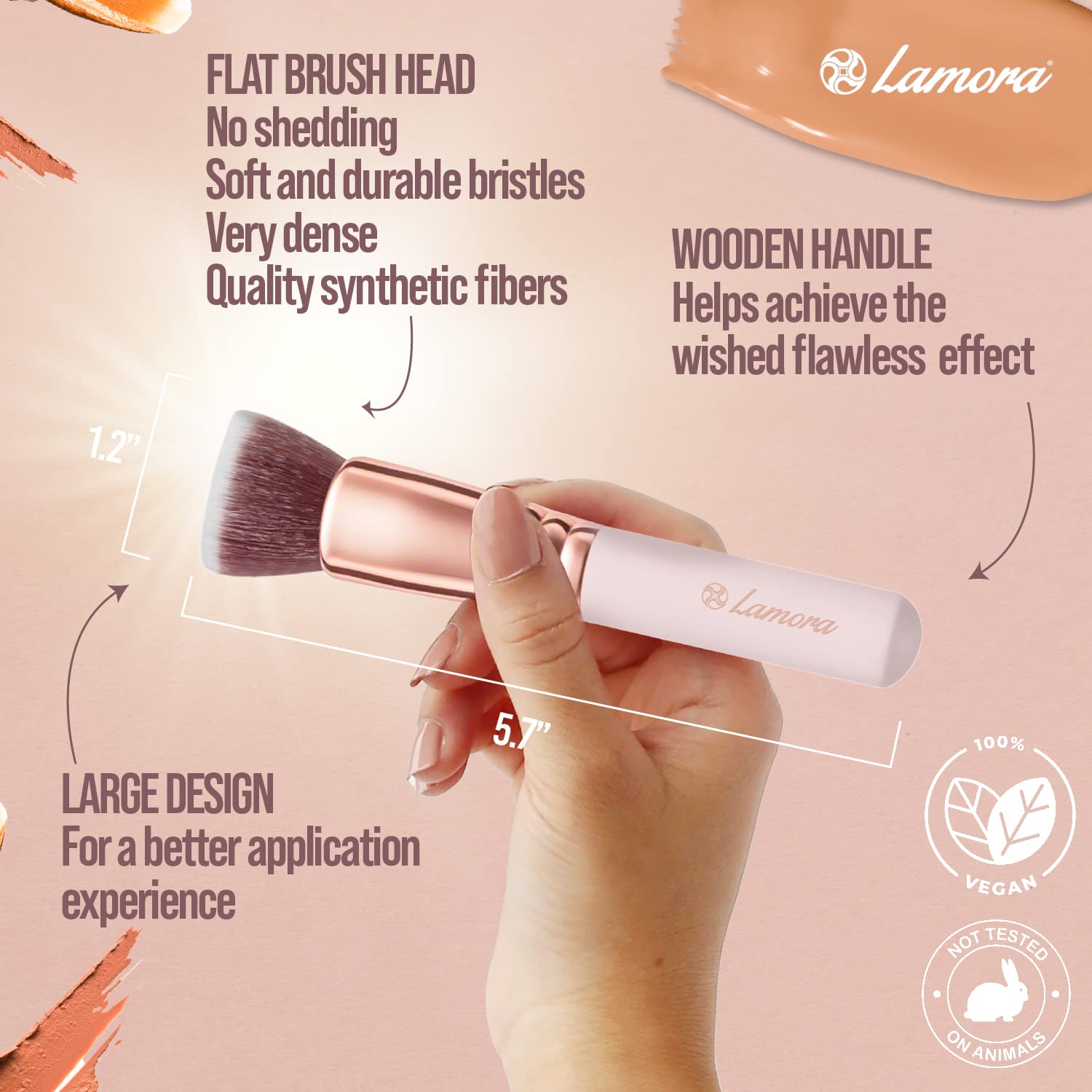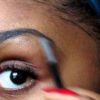
 By
Your Beauty Plug
By
Your Beauty Plug
Makeup brushes are essential tools for creating flawless and beautiful makeup looks. But with so many types, shapes, and sizes of brushes available, how do you know which ones to use and how to use them? In this blog post, we will guide you through the basics of makeup brushes, focusing on six types of brushes that are perfect for applying different kinds of face makeup. We will also answer some frequently asked questions and share some tips and tricks to make the most out of your brushes.
A kabuki foundation brush is a large, round, and dense brush that is ideal for applying liquid, cream, or powder foundation. The name comes from the Japanese drama theaters where actors used these brushes to apply heavy layers of white rice powder. A kabuki foundation brush can help you achieve a smooth, even, and full coverage look, as it can blend the foundation seamlessly into your skin without leaving any streaks or patches.
To use a kabuki foundation brush, start by applying a small amount of foundation to the back of your hand or a mixing palette. Then, dip the brush into the foundation and swirl it around to distribute the product evenly. Next, apply the foundation to your face in circular motions, starting from the center and moving outward. You can also use the brush to buff and blend the foundation into your hairline, jawline, and neck for a natural finish.
Some examples of kabuki foundation brushes are the BK Beauty 101 Contoured Foundation Brush and the Koh Gen Do Perfect Foundation Brush.
A body makeup brush is a large, flat, and angled brush that is designed to apply makeup to larger areas of the body, such as the legs, arms, chest, and back. A body makeup brush can help you achieve a flawless and even application of body makeup, such as bronzer, highlighter, or self-tanner, without leaving any streaks or patches.
To use a body makeup brush, start by applying a small amount of body makeup to the back of your hand or a mixing palette. Then, dip the brush into the body makeup and swirl it around to distribute the product evenly. Next, apply the body makeup to your desired area in long and sweeping strokes, following the natural contours of your body. You can also use the brush to blend and buff the body makeup into your skin for a seamless finish.
Some examples of body makeup brushes are the Real Techniques Angled Kabuki Brush and the Goerti Body Makeup Brush.
The best makeup foundation brush for you depends on your personal preference, skin type, foundation formula, and desired level of coverage. However, some general guidelines to follow are:
The best makeup brush for you depends on your personal preference, makeup style, and budget. However, some general guidelines to follow are:
Some examples of makeup brushes that are well-reviewed and recommended by experts and editors are the Dior Kabuki Brush 17, the Artis Elite Smoke Palm Oval Makeup Brush, and the Patrick Ta Dual-Ended Complexion Brush.
The best makeup brush for liquid foundation is one that can apply and blend your foundation smoothly and evenly, without leaving any streaks, patches, or cakey areas. The best makeup brush for liquid foundation also depends on your personal preference, skin type, foundation formula, and desired level of coverage. However, some general guidelines to follow are:
The best cream foundation brush is one that can apply and blend your cream foundation seamlessly and flawlessly, without leaving any streaks, patches, or cakey areas. The best cream foundation brush also depends on your personal preference, skin type, foundation formula, and desired level of coverage. However, some general guidelines to follow are:
A makeup brush kabuki is a type of makeup brush that has a short handle and a large, round, and dense head of bristles. The name comes from the Japanese drama theaters where actors used these brushes to apply heavy layers of white rice powder. A makeup brush kabuki can be used to apply and blend various kinds of face makeup, such as foundation, powder, blush, bronzer, and highlighter. A makeup brush kabuki can help you achieve a smooth, even, and full coverage look, as it can blend the makeup seamlessly into your skin without leaving any streaks or patches.
To use a makeup brush kabuki, start by applying a small amount of makeup to the back of your hand or a mixing palette. Then, dip the brush into the makeup and swirl it around to distribute the product evenly. Next, apply the makeup to your face in circular motions, starting from the center and moving outward. You can also use the brush to buff and blend the makeup into your hairline, jawline, and neck for a natural finish.
Some examples of makeup brush kabukis are the Dior Kabuki Brush 17, the Nars Ita Kabuki Brush, and the IT Cosmetics Airbrush Essential Kabuki Brush.
Q: How often should I wash my makeup brushes?
A: According to makeup artist Nick Lujan, you should wash your makeup brushes at least once a week to prevent bacteria buildup, product residue, and color transfer. However, if you use your brushes daily or with cream or liquid products, you may need to wash them more frequently.
Q: How do I wash my makeup brushes?
A: Lujan recommends the following steps to wash your makeup brushes:
Never miss an important update. Be the first to receive our exclusive beauty tips straight into your inbox.